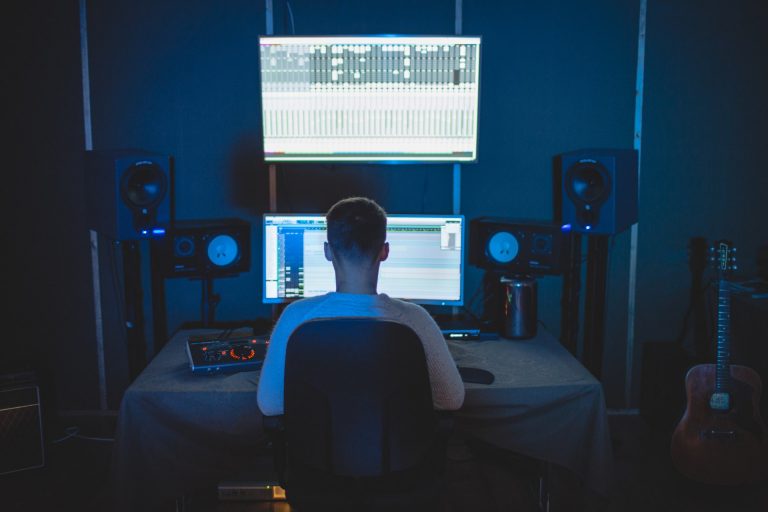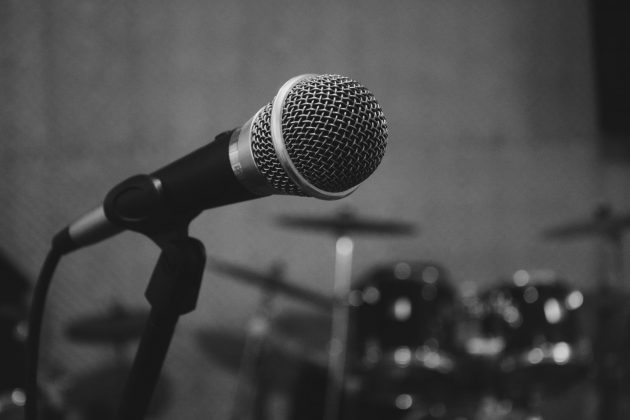
How To Record Latin Music At Home: A 6-Step Guide
21 September, 2021Latin music often seems like the impossible beast to conquer when it comes to engineering a great-sounding recording. That’s because Latin tracks are usually very dense with multiple, simultaneous instruments playing many different notes and rhythms. Recording Latin music with your home studio set up can be a fulfilling but challenging experience. While the preamble to mixing in Latin music is not much different from other genres, you can get stuck once you hit a certain point. In this article, we will discuss how you can record your favorite Latin music right from your home studio.
Studio Setup
The first thing to do when preparing for any recording session is setting up your gear such that it functions properly and provides the best sound possible. This starts with configuring your monitoring system. For this, we recommend using studio monitors over earbuds or expensive headphones if at all possible because they provide more accurate monitoring than most other systems available.
Once you have your monitoring system set up, it’s time to dial in the sound of your microphones into what you will hear through your headphones. Be sure that each microphone is placed at an appropriate distance from its intended source and perform some preliminary checks on levels before recording anything just so that the signal chain is clear of potential issues.
Preparing and Tuning Instruments
Once you have all of your gear set up and sound dialed in properly, it’s time to focus on getting good takes from your musicians. The first step towards doing this is by practicing beforehand; make sure you give your musicians enough time to warm up before starting recording anything serious. If possible, try out different rooms for acoustics along with different kinds of instruments for an idea of what sounds best. Be sure to use the right home studio equipment and that all the vocal settings for the instruments have been tuned in properly. The last thing you want is to be stuck working on the settings right in the middle of your session!
Also, try not to overdo it on takes; ideally, 3 or 4 good recordings should be enough. Excessive recording can result in splicing problems later on as well as other issues related to having too many edits within a given musical take.
Choosing a Microphone for Recording Latin Music at Home
When choosing a microphone, it really helps to have an idea of what you want to record and how before looking at options. For example, if you are recording a full band set up with the drums as your primary instrument you would benefit from using overhead mics or ideally multiple microphones set up around the kit. This way both the drum sound and any additional instruments such as piano/guitar/bass can also be captured clearly.
Recording Loud Performances
Once you have all of your mics properly placed and oriented, it’s time to start the actual recording phase! In our experience, Latin music covers tend to be pretty dynamic in terms of volume changes throughout a song. While this is great from a musical standpoint it can present problems when trying to mix later on. This means that before committing any individual take to audio files for editing, be sure to check overall levels with the waveform view so as not to fix them afterward. If you do notice any clipping issues, consider adjusting your fader level or using compression/limiting tools during the recording phase so they are fixed right away. This will save you a lot of trouble later!
Choosing the Right Recording Format
Before making any final decisions about what to record your music in, it’s important to understand why different formats work better for different types of projects. For example, if there are only a few instruments involved, recording at 16-bit/44.1kHz should be enough as far as quality is concerned; this way the risk of data loss over-compression is minimized and you will save yourself some trouble down the line.
Mastering The Music
Now that we’ve gone over how to record Latin music at home, let’s talk about mastering! In order to avoid ending up with a flat-sounding mix. You should always leave time for finalizing your mastering Latin music recordings to make the vocals sound crisp and improve the audio quality of the song. Once all of these things are taken care of, feel free to evaluate your final results.

Try a few practices runs before doing anything official just to make sure everything sounds good enough for you and your friends. Once you’re happy with how it sounds, go ahead and release your first Latin song!
Follow Sounds and Colours: Facebook / Twitter / Instagram / Mixcloud / Soundcloud / Bandcamp
Subscribe to the Sounds and Colours Newsletter for regular updates, news and competitions bringing the best of Latin American culture direct to your Inbox.

